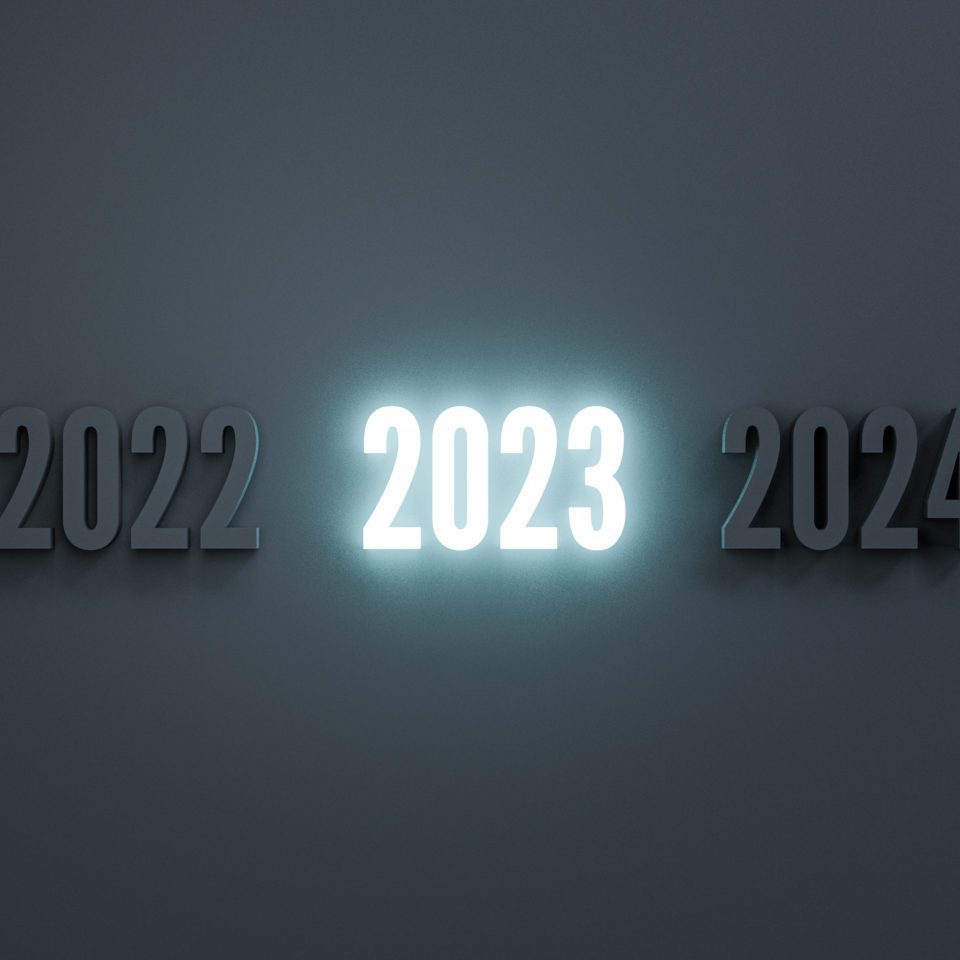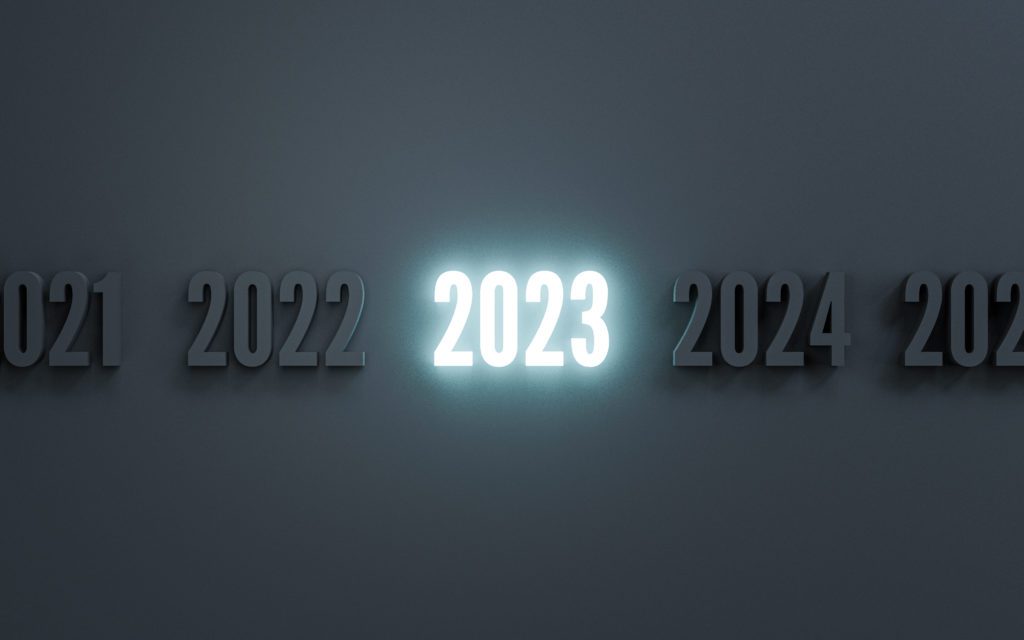
Website trends 2023
Digital evolution
At Modular we know first hand, digital technology is constantly evolving, and nowhere is this process more evident than in the field of website design and architecture. If you look at a live version of a website from a decade ago and place it next to a contemporary one, the difference will be striking. Two of the most dominant web development platforms today are WordPress and Umbraco. Let’s begin by looking at the key trends within these big beasts of the digital space, and then examine some more general current trends in contemporary website design.

WordPress Trends
The use of white space to create a minimalist design aesthetic is a popular and constantly evolving feature of WordPress-based web design. It’s easier to read and absorb information in a cool, uncluttered space, and it also makes a website easier to navigate if there’s not lots of different (and possibly conflicting) coloured elements. White space is to the WordPress web designer what the ergonomic curve is to the design engineer: it’s a way of making a website better to use and more beautiful to look at.
Web designers often use a minimalist style with white space to focus on the core functions of the website, in order to simplify and optimise the user’s journey through the site. This is becoming an increasingly important part of WordPress designs in 2023.
Mobile-friendliness is another vital aspect of the way WordPress design is evolving. Many advanced websites now offer so-called responsive features, so they modify their appearance depending on whether they are viewed on a desktop computer or a mobile device. In 2023, WordPress designers are putting mobile-friendliness at the centre of their approach; tablets and smartphones have become a huge part of the way people view content online, so this process is in many ways a direct response to the changing ways the internet itself is being used. So-called ‘responsive themes’ automatically change a website’s design for any given screen size or type, and these themes are usually operated by a specific mobile plug-in.
Typography is another area in which WordPress design is rapidly evolving. So-called ‘interactive typographies’ are becoming increasingly popular; this essentially means that elements of a website’s typography can change depending on how the content is being viewed. Apple was arguably the first technology brand to truly understand the importance of digital typography; back in the 1990s, Steve Jobs was one of just a small handful of people in Silicon Valley who grasped that great typography makes using digital technology far better. This process is now extending throughout contemporary web design.
Umbraco
Umbraco is one of the main rivals to WordPress in the web development world, offering a host of different software solutions with which developers can build and maintain websites and apps. Umbraco itself has recently argued that 2023 will see some radical changes in the way content management systems (CMS) will be run, due to the inflationary environment in the global economy and the way higher costs are forcing businesses to make important decisions about how they spend their money, and to more closely evaluate the return on investment from the digital services they use. Adam Millington, our founder and Creative Director, has recently made a fascinating observation about the way this process will affect digital development at large:
“So often we see organisations restricted by technology – legacy systems that do not integrate with new softwares or new new softwares that are designed just for organisational needs only. No longer is it the case that one mega-platform meets all needs. More and more “digital” is about looking at the broader, holistic view – the parts, the sum of the parts and the whole. Integrating systems will not only deliver digital dexterity but far improved digital health and overall customer experiences.”
Umbraco has also recently suggested that data protection issues will be another key theme influencing website design in 2023. The digital space in Europe must now conform to EU law regarding GDPR (General Data Protection Regulation) that’s also adopted by non-EU states like the UK and Norway. It seems likely that trend that the trend of businesses emphasising the importance of protecting the data of their customers will continue at pace. One common criticism of GDPR regulations (even by those who support the principle) is that they have made the internet worse to use, due to the various opt-in or opt-out requirements that they demand every time a user visits a website.
Businesses and organisations that achieve the highest levels of customer data protection at the same time as achieving minimal interruption of user journeys through their websites will succeed. Those that don’t might fail. Many of us have abandoned our interactions with a website due to its poor integration of data protection requirements, as the dreaded pop-up box asking us to ‘accept all cookies’ or ‘only accept essential cookies’ rears its hectoring head.
Better data protection legislation would help a great deal in this area. It would, of course, be much better from a user experience perspective if the default setting for all non-essential marketing cookies was ‘off’ and website users could opt-in to them at their leisure, if they wished to receive them, rather than via an automated pop-up request. Digital marketers wouldn’t like this arrangement much at all, however. Overall, though, data protection is an area of web design that’s going to see some big changes in the near future, and it’s worth watching this space carefully.
Other trends in web design in 2023
Digital design trends, as with trends in fashion and art, can look to the past as well as the future. In 2023, we can observe the introduction of nostalgic elements of retro design in digital spaces – the so-called Y2K aesthetic – alongside cutting-edge contemporary features. There’s also a distinct and observable pivot toward more immersive experiences in all aspects of digital design. These might be driven by improvements in individual technologies, like video integration, and other even more radical innovations such as augmented reality (AR) and virtual reality (VR).
The Y2K aesthetic has even penetrated as far as typography itself, with the re-introduction of the sans-serif fonts and so-called ‘flat design’ that were both common in the very early days of desktop computers. The digital retro movement even extends into the deliberate re-introduction of designed pixellation (a feature of very early desktops) on some of the most stylish websites. With the reimagining of old digital spaces by a new cohort of hipster designers, some of the latest websites are sporting a distinctly retro look, in a style that’s become known as retro-futurism. It’s as if the current popularity of high-waisted jeans in the 2020s – originally a style championed by American housewives in the 1950s – has reached all the way into web design and development. Customised typefaces are another aspect of this movement, including one-off, bespoke fonts, and even digitalised handwriting instead of typography.
Perhaps the most controversial of all the various areas of digital evolution, though, concerns the rise (or otherwise) of the so-called ‘metaverse’. Much championed by Facebook founder and Meta CEO Mark Zuckerberg, along with various leading figures in the gaming space, the metaverse describes a particular idea of the internet as a universal and immersive virtual world. The fact that this ‘immersive world’ for the most part requires bulky wearable hardware – such as large headsets – currently makes it look a lot more like a geek’s paradise than a viable, progressive evolution of the web. Meta’s share price collapse in the past year suggests that investors feel the same way, too. Time, however, will determine exactly how this intensely-debated digital realm evolves.
If you want your website to stay up-to-date with the very latest design and development trends, it’s great to be able to discuss your requirements with a friendly digital expert. At Modular Digital, we live and breathe websites and apps, and we’d be delighted to discuss your ambitions for your website, and how you’d like to optimise it for your business or organisation. So don’t hesitate to contact us to chat about your project; in our experience, all great business relationships start with a call.
You can reach out to Emma on 07584 652 285 or emma@thisismodular.co.uk to get the conversation started.


